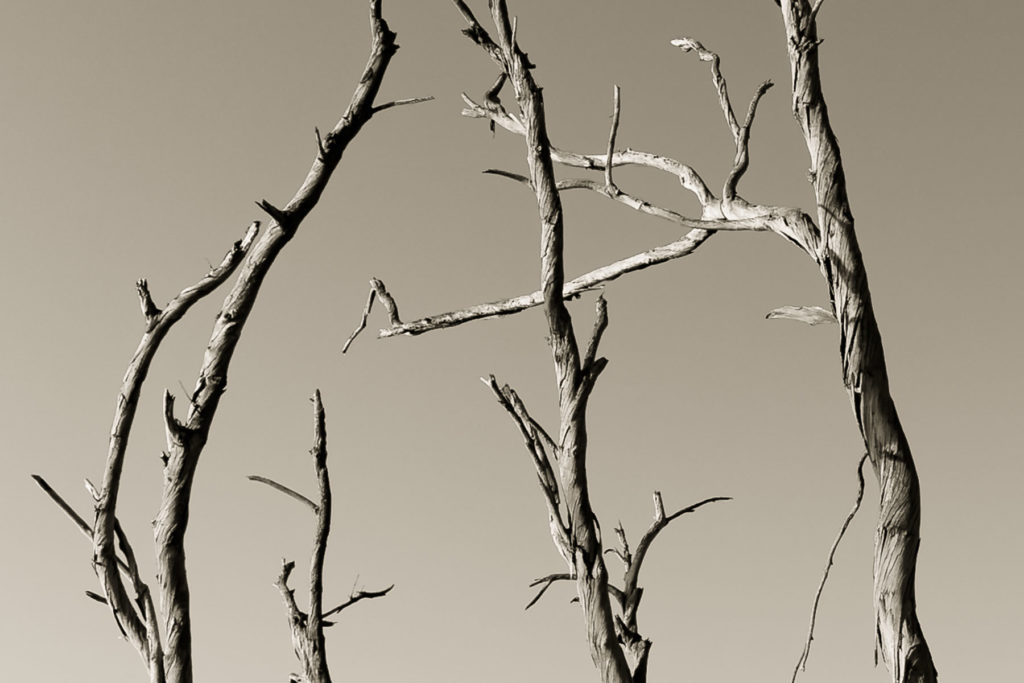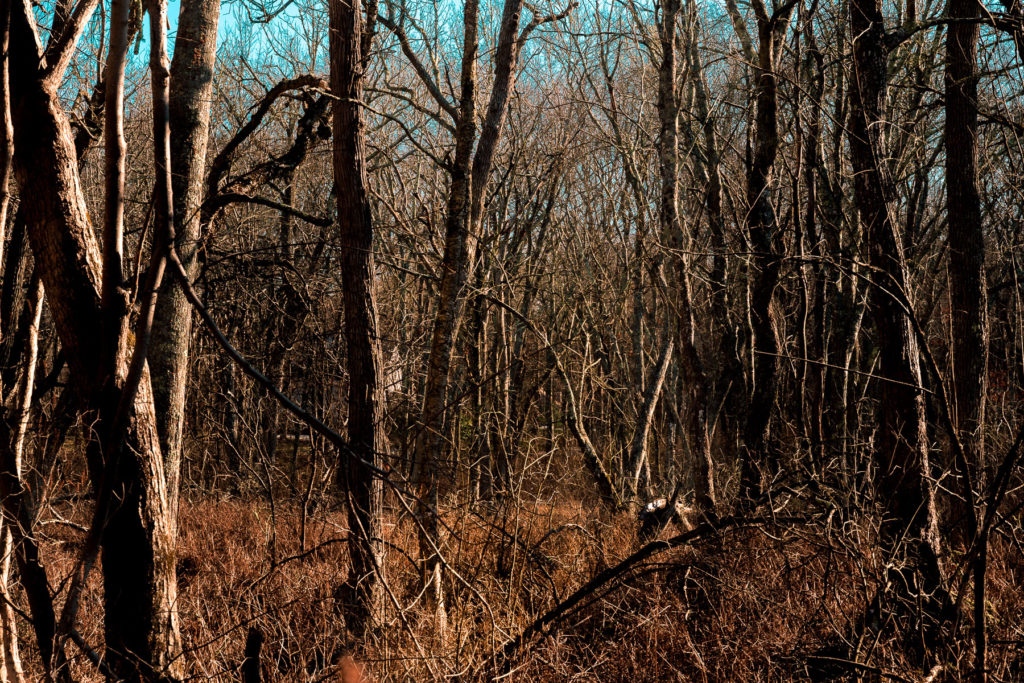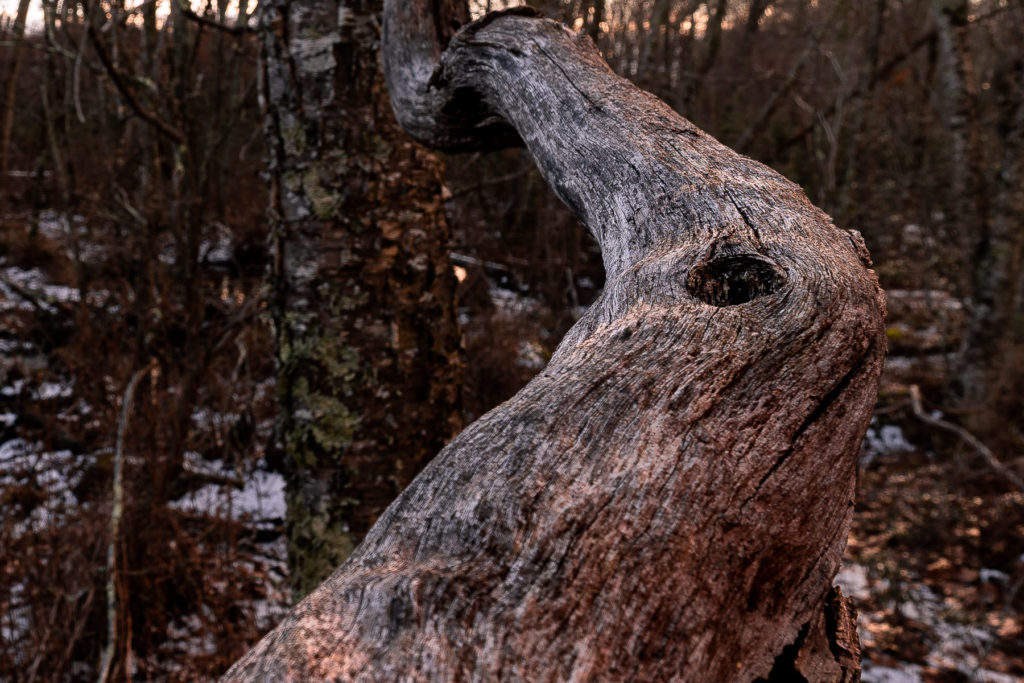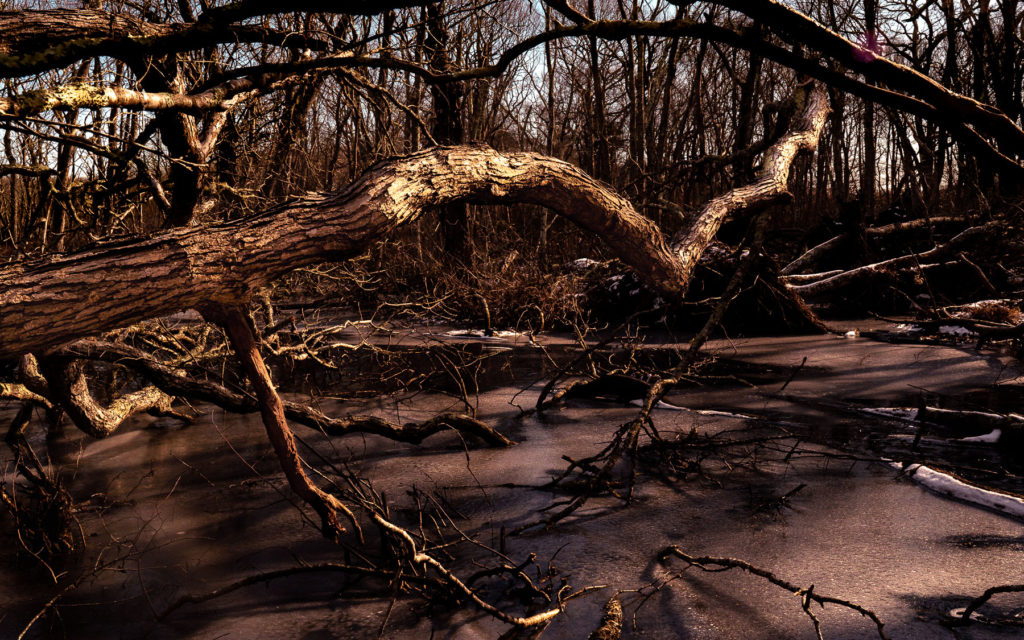I like shooting trees. I like the walks I take to find one I want to photograph. I like staring at them when I finally get to them. I like circling them, dissecting them, lingering close and moving far away.
With patience, I usually get a shot I’m happy with.

Of course, sometimes the best tree isn’t even the whole tree but, instead, the geometry of its trunk and branches, or the texture of its bark.

The woods though, shooting them is a struggle.
I think there are a few things going on. The woods – the deep woods, anyway – supercharge the senses. Before we even get to what’s visually before us we smell deep a composting earth; we hear the quiet, muffled noise of wind and branches, birds and whatever might be calling in the distance; our minds whirl with the cultural resonance of what it means to be deep in the woods; and for me, at least, the woods trigger a nostalgic melancholy of days long past that competes with the thrill of being in the here and now.
Or, put another way:
All forests have their own personality. I don’t just mean the obvious differences, like how an English woodland is different from a Central American rain forest, or comparing tracts of West Coast redwoods to the saguaro forests of the American Southwest… they each have their own gossip, their own sound, their own rustling whispers and smells. A voice speaks up when you enter their acres that can’t be mistaken for one you’d hear anyplace else, a voice true to those particular tress, individual rather than of their species. – Charles de Lint, The Onion Girl.
Exposing that non-visual complexity is hard. So too just getting a decent, formal composition of what we actually see. This is, in part, because of the scale of things. Trees are large. To capture or contextualize them in their environment you need to step back. But stepping back in the woods doesn’t really work because another tree or branch will block the image you’re trying to take. Simply, the woods are too visually busy.1
Take, for instance, the shot below. I tried dodging and burning a path through the middle of it to focus the eye but it’s just too busy. Everything is fighting for attention.

There was something spectacular about the spot though. I just couldn’t capture the light, the mood, the texture or, really, anything that made this anonymous plot in the middle of the woods so resonant to me. Instead, it looks fairly mundane.
It was frustrating. So frustrating that I went back to the same spot a few days in a row.
Over the winter I spent time photographing the woods in Rhode Island. There’s nothing epic about them. The best that could be said about the woods here is that in the winter they’re fairly stark in a generic sort of way.
I started with a wide angle lens which was a failure. It captured too much – too many trees, too many branches – so I moved on to a light zoom in order to hone in on details I was seeing. I also climbed on a lot of branches.
Moving closer gave me better results. By negating the visual periphery of what I stood in, I was better able to allude to it, better able to capture the feeling of being there. After my defeat trying to capture the entirety of the space, I went back to basics and simply captured textures.

From there, I stepped back just a bit in an attempt to bring in more elements without overwhelming the viewer with the busyness that is too many trees, branches and lines. I started getting images that give a better sense and feel for this particular place.

I’m happy with the direction this is moving if not yet fully satisfied with the results. I’ll return to the woods this winter when they’re stark again. I think there’s a way – or methodology outside of blind luck – to capture the deep feeling I have there. I just haven’t quite found it yet.2
Various images. Sony A7iii, Tamron 28-75,
-
Take, for instance, the first image I posted above. There’s nothing particularly special about the trees in and of themselves, but step back and place them with the stone wall and surrounding field and they carry an interesting resonance. back
-
I’m tempted to drop in the many, many misses from my shoots in the woods but will spare you. I will say that the most frustrating was a beautifully trunk split in half from what I imagine was lightning. I just couldn’t for the life of me do it justice even though I tried over two different days.back






